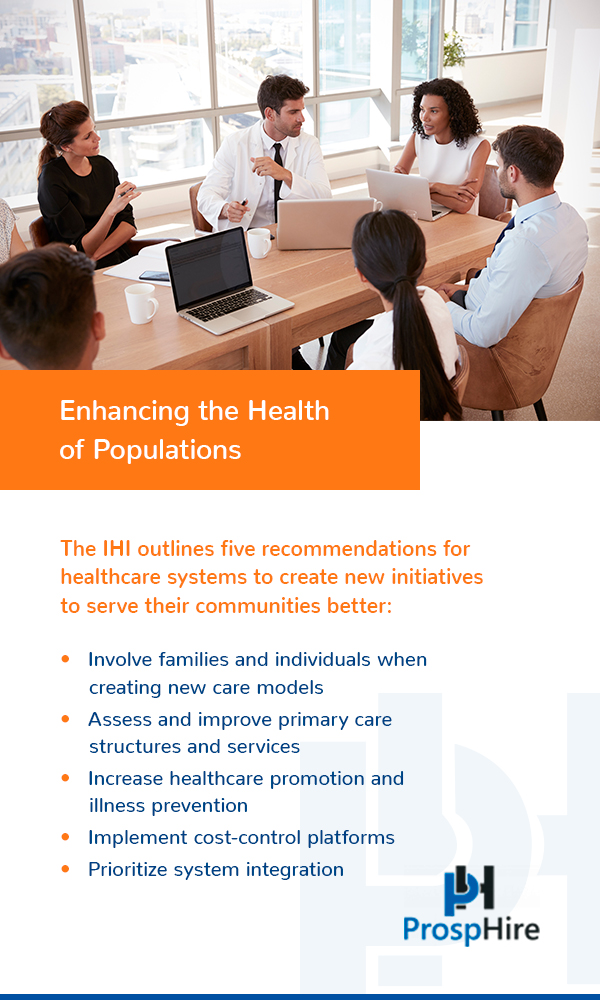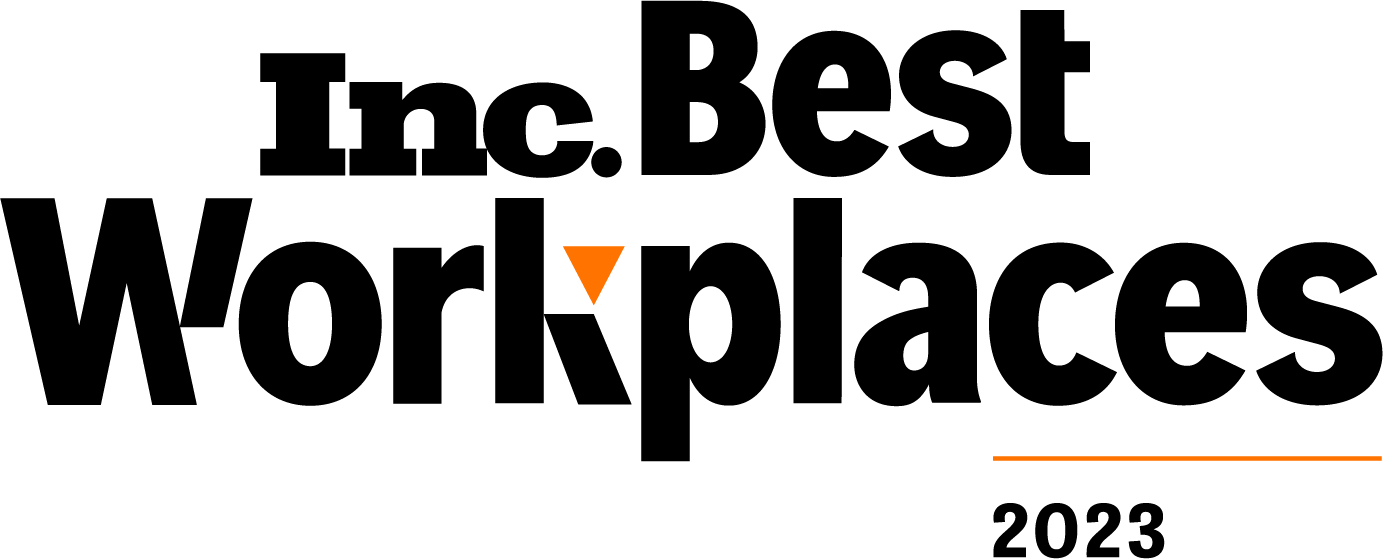
What Is the Triple and Quadruple Aim in Healthcare and Should There Be a 5th Aim?
Jump to:
- What is the Triple Aim in Healthcare?
- What Is the Quadruple Aim in Healthcare?
- Should There Be a 5th Aim in Healthcare?
The healthcare system helps provide life-saving treatments and prevention techniques to minimize the risk of negative patient outcomes. The Triple and Quadruple Aim are fundamental pillars of the healthcare field designed to ensure patients receive quality care. Learn more about the Triple and Quadruple Aim in healthcare and if there should be a 5th Aim.
What Is the Triple Aim in Healthcare?
The Institute for Healthcare Improvement (IHI) created the framework to aid healthcare organizations optimize performance with various metrics in 2007, known as the Triple Aim because it uses a three-pronged approach. The Triple Aim approach focuses on improving patient experience, reducing the cost of care and improving the health of populations.

1. Improving Patient Experience
A fundamental aspect of the Triple Aim is to improve patients’ experiences including the satisfaction and the quality of care. To improve patient experience on a population level, a healthcare organization should analyze a community’s overall health, determine specific risk areas and assess mortality rates.
Over the last few years, continuing initiatives aim to help patients visit and navigate healthcare organizations more efficiently and effectively. These initiatives focus largely on improving communication between providers. A few examples of these initiatives include accountable care organizations (ACOs), electronic health records (EHRs), shared decision-making and managed care organizations (MCOs).
Healthcare facilities can measure the effectiveness of these initiatives via patient satisfaction surveys and quality improvement measures.
2. Lowering Per Capita Healthcare Costs
The United States leads with the most expensive healthcare among wealthy democracies in the world. Despite high medical costs, the United States’ life expectancy falls short of many other countries with less expensive healthcare systems. Although medical expenses are rising, the overall quality of care isn’t.
Many other countries worldwide provide a higher level of care with significantly lower costs. Providing affordable healthcare without sacrificing quality takes a planned approach to be successful, as numerous factors directly impact healthcare costs and quality of care.
One aspect affecting cost and care quality is that the American population is aging, meaning many citizens are more prone to chronic or severe health complications. Many of these health complications arise from a larger number of people living longer lives.
Aging populations with higher life expectancies are naturally more prone to chronic or age-related medical conditions, which are often more expensive to diagnose and treat properly. Triple Aim is designed to help healthcare organizations find innovative ways to minimize costs when providing care while improving the overall quality of care.
3. Enhancing the Health of Populations
The third pillar of the Triple Aim is to prioritize the surrounding population’s health and address potential at-risk areas within the population.
Determining some of the most common reasons a specific portion of the population may need to engage with a healthcare organization can preemptively develop initiatives to minimize associated costs and offer patient-centered, coordinated care.

The IHI outlines five recommendations for healthcare systems to create new initiatives to serve their communities better:
- Involve families and individuals when creating new care models
- Assess and improve primary care structures and services
- Increase healthcare promotion and illness prevention
- Implement cost-control platforms
- Prioritize system integration
What Is the Quadruple Aim in Healthcare?
The Quadruple Aim of healthcare is designed to improve overall healthcare efficiency and extend a system’s competitive advantage. The Quadruple Aim builds off the Third Aim and adds an overall goal of improving the work life of medical providers and their staff.
Enhance Healthcare Provider Work Life
Value-based care has become more popular and the quality of care provided has also become fundamental. Patient care, experiences and outcomes are directly tied to the providers offering medical care. Healthcare providers face immense pressure and strain, increasing the risk of negative outcomes that can lower the quality of care provided.
Lower morale and decreased staff engagement can lead to lower patient satisfaction, provider burnout, higher costs and poor outcomes, which all go against the scope of the Triple Aim. The Quadruple Aim addresses this gap, ensuring the fundamental aspects of the Triple Aim remain while adding another fundamental layer.

Should There Be a 5th Aim in Healthcare?
As the Quadruple Aim updated and refined the goals of the Triple Aim, many are now discussing what a Quintile Aim would be and if it would provide further value to healthcare providers and patients. Many believe the Quintile Aim in healthcare should focus on equity of care.
For example, medical conditions and access to medical care are widely skewed. In communities of color and communities with little to no English literacy, medical care is not as easily accessible. Unfortunately, this often means higher rates of illnesses and negative patient experiences.
While the Quadruple Aim is an important tool to address care gaps and provide standardized, high-quality care to all patients, many believe it is missing a fundamental aspect. The 5th Aim, wholistic health equity, can refine healthcare best practices and improve patient outcomes.
Wholistic Health Equity
The 5th Aim is proposed as another key aspect of efficient and effective healthcare. A fundamental element of wholistic health equity is ensuring inclusion, equity and diversity across populations with reimbursement that ensures value-based care accountability.
The 5th Aim proposes a new pillar to healthcare that serves as a quality compass for fair, equitable medical care across providers, populations and profit margins. For the 5th Aim to be successful, cultural awareness training is needed to help the healthcare system understand unconscious bias, which negatively impacts patient care.
The fundamental aspects of implementing the 5th Aim in healthcare include:
- Equitable and adequate reimbursement for mental healthcare across public and private insurers
- Grant funding to close gaps in treatment and care accessibility
- Focus on provider shortages resulting from expanding provider networks
- Attention to specialty healthcare needs, including communities of color as well as LGBTQIA+ communities
- Treatment space to ensure access to quality physical and mental health services
- Continuing education and training for practitioners and providers to mitigate bias and stigma
- Access to mental health services without appointment delays
The healthcare field is designed to help sick and injured people become well again. While the system was created to help people, it unintentionally has harmed many communities because there is not equal access to reliable, quality care. Without equitable access, marginalized communities continue to be underserved.
An overarching goal of the 5th Aim is to address, mitigate and prevent implicit bias. Implicit biases and stigma are mental associations we make outside of our conscious thought, leading to a negative evaluation of a person based on irrelevant traits, including sexual orientation, religion, gender, ability and race.
In one study, over 83% of healthcare professionals implicitly preferred patients without disabilities. This implicit bias directly relates to negative patient experiences and poor quality of care. The 5th Aim focuses on bias training and further education to lower the prevalence of such biases.

How We Can Help
At ProspHire, we combine exceptional service and healthcare expertise for our clients. We are dedicated to helping our clients across the country provide high-quality medical care. Our team works with each client on an individual level to identify and overcome various obstacles.
We have the resources, knowledge and experience needed for success in the healthcare industry. Our team helps each of our clients improve their organization by ensuring they get the technology, tools and people they need for long-term success.
Some of our most popular services include Clinical Service Optimization, Stars performance improvement, program and project management, benefits optimization, business growth and expansion and more.
Contact us online to learn more about how we can help your healthcare organization improve its efficiency and effectiveness.
Let’s have a conversation
ProspHire
216 Blvd of the Allies, Sixth Floor
Pittsburgh, PA 15222
412.391.1100
[email protected]
Quick Links
© 2024 ProspHire, LLC. All Rights Reserved / Terms of Use / Privacy Policy









